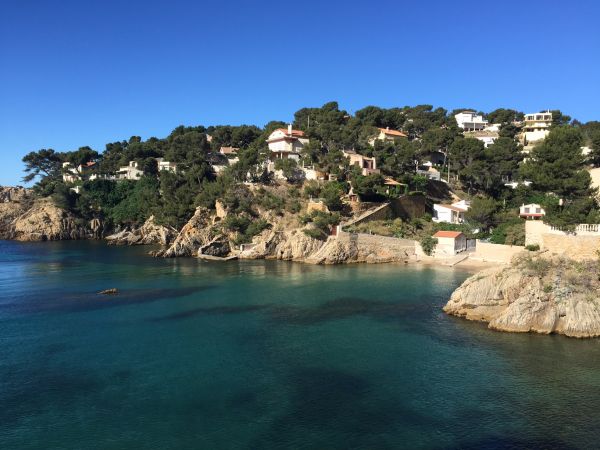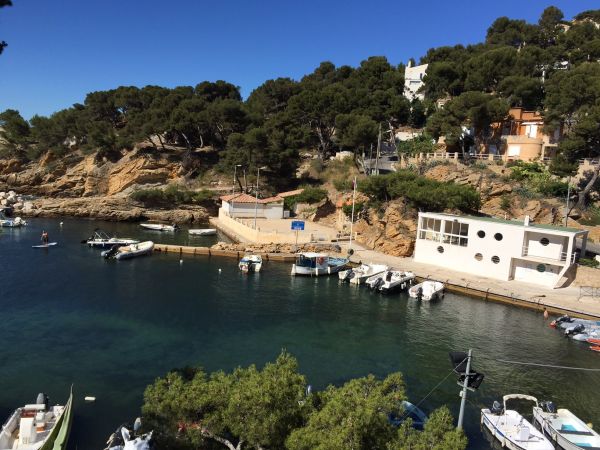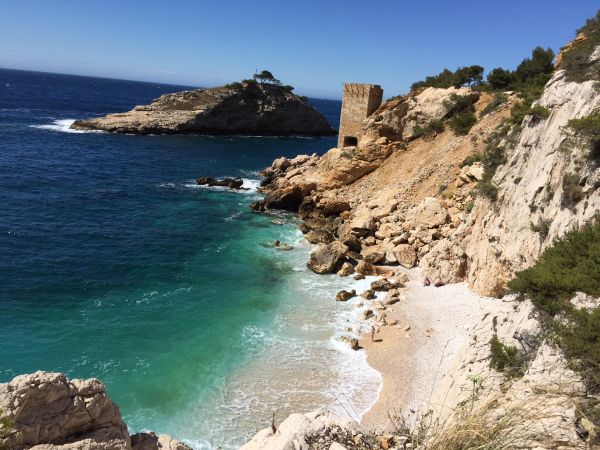The Côte Bleue is the stretch of the Mediterranean coast between the west of Marseille and the mouth of Berre lagoon. The coastal area encompasses the towns of Le Rove, Ensuès-la-Redonne, Carry-le-Rouet, Sausset-les-Pins and Martigues. The name Côte Bleue or 'Blue Coast' refers to the colour of the water surrounding the shores. The 22 km coastline is bordered by unique, rugged and well-preserved landscape thriving with wild flora and fauna on one side and beaches, creeks and ports on the other.
For its geographic location, Le Rove is the first town on the Côte Bleue. It has a preservation area (since 20 June 2013) of 2,000 hectares, or 87% of its land. Relaxing and with lots of things to do, Le Rove is mainly known for its famous goats. The Rove goat has a striking appearance with large horns lending it particular elegance. It has a short, smooth coat in a variety of colours. An especially hardy breed, they can live in snow as well as manage long droughts in summer. Brousse du Rove, a local cheese made from their milk, is absolutely delicious, even if we do say so ourselves!
Ensuès-la-Redonne, also known as the 'village of five creeks', is nestled in a depression overlooking the sea and boasts some lovely creeks and small ports. Beautiful spots include La Madrague de Gignac, La Redonne, Les Figuières, Petit Méjean and Grand Méjean. This idyllic environment continues inland where nearly 80% of the town is covered in scrubland and pines. The town offers visitors the very best of the Provençal lifestyle.
Sausset-les-Pins is a stunning natural site spread out below its 19th century château. A little fishing village with narrow streets for strolling along and pretty terraces for passing the time, Sausset-les-Pins also offers a variety of water sports and beaches with plenty to do. Its typical Provençal market is held every Thursday and Sunday by the port.
La Couronne is well known for its fine sand beaches, Le Verdon in particular. The coastal path, which runs for 15 km past Bonnieu beach all the way to Boumandariel cove, hugs the Mediterranean coast and is lined with displays of fossils, some between 20 and 140 million years old! The fitness trail is a fun and healthy way for the family to discover the pine forest. The French TV soap 'Camping Paradis' is filmed in La Couronne! Shooting runs from April to September.
Carro is well frequented by surfers, windsurfers, body boarders and kite flyers who come to take advantage of the Mistral wind at Les Arnettes. This cute little fishing village comes to life every morning by the fishmongers at the port who sell their wares from 8.30 am to midday, weather permitting.
The exhibition 'entre mer et collines' (between sea and hills), on the first floor of the Cercle des Pêcheurs building, retraces the history of the villages of Carro and La Couronne, its archaeology, stones and agriculture through photographs, eye-witness accounts and artefacts. The 'botanical loop' in the heart of the village is planted with a host of typically Mediterranean plants.
Martigues is made up of three districts (Ferrières in the north, the island in the middle and Joncquières in the south) not to mention the hamlets of Saint-Julien-les-Martigues, Saint-Pierre, Carro and La Couronne on the Côte Bleue. The island district is the most popular with tourists and is the heart of the village, also known as the 'Venice of Provence' for its canals. Its bright and pleasant setting has made it a go-to destination for painters and directors. The 'Moiroir aux Oiseaux' is an oasis of peace, an area regularly frequented by painters such as Ziem, Delacroix, Dufy and Picabia to name a few. The town is packed with things to see and do, including the 'history gallery' at the town hall, Théâtre des Salins, Musée Ziem, Notre Dame de la Miséricorde Church (with views of Martigues and Berre lagoon), Tholon archaeological site and more.
Poutargue is the culinary speciality of the region. A name for mullet eggs cured in their own pouches. It is prepared in the two remaining 'calen' (type of net) in France (Martigues and Port-de-Bouc). 'Calen' fishing is a traditional technique still practised today to catch mullet.


















